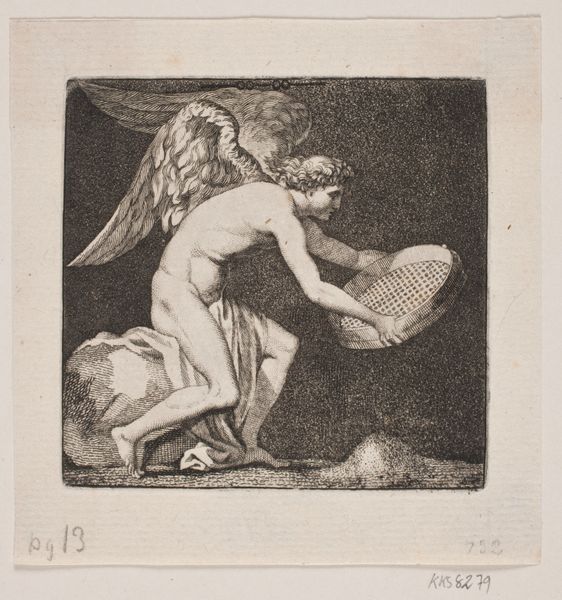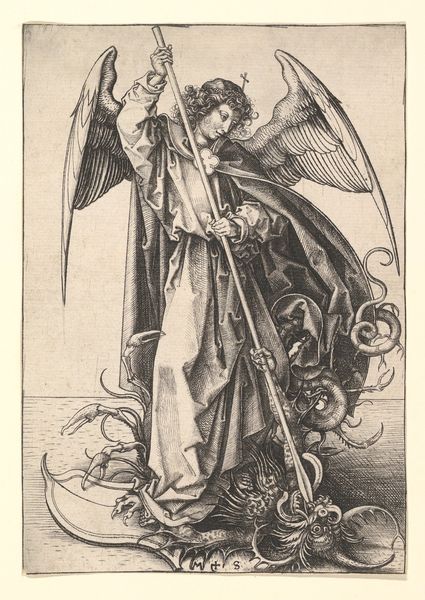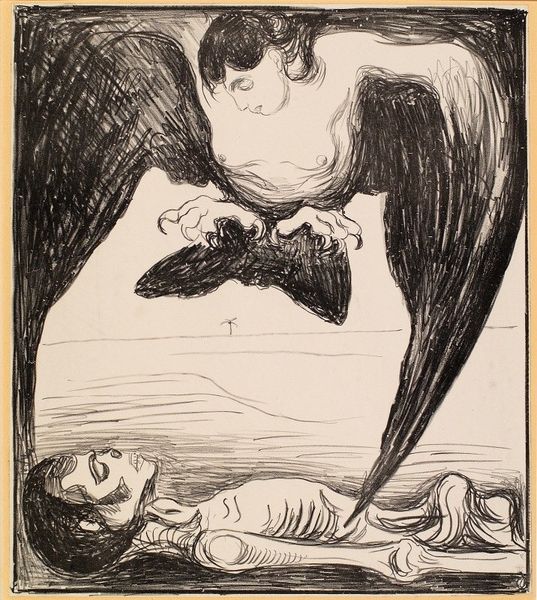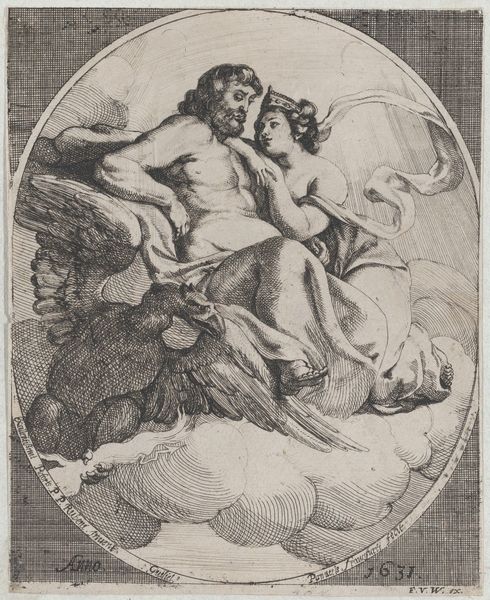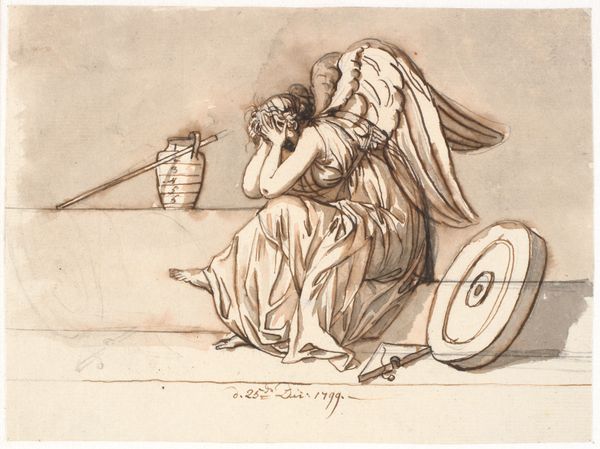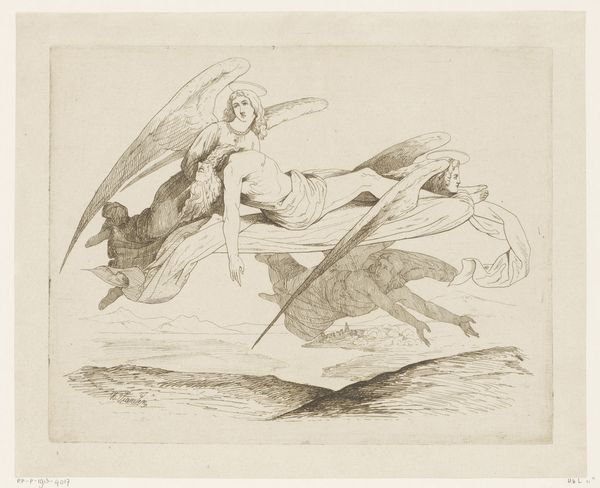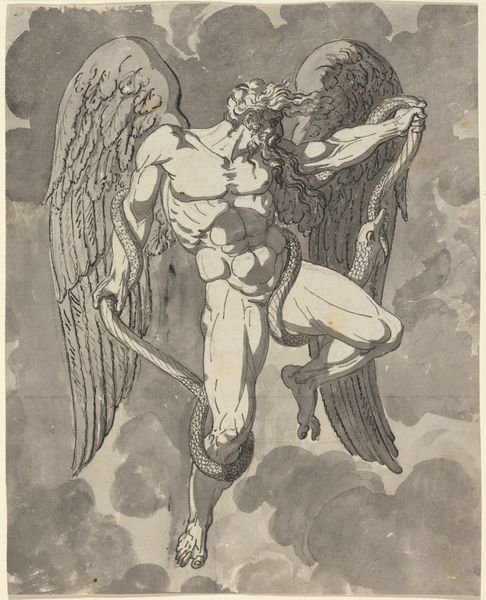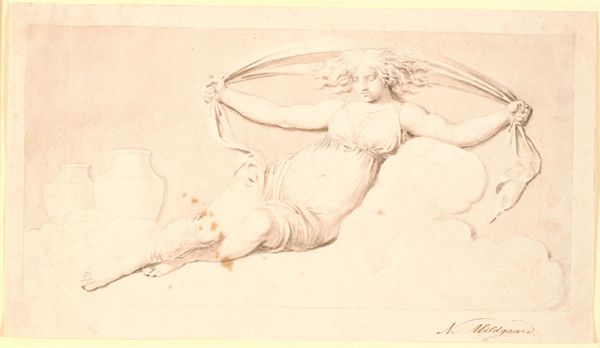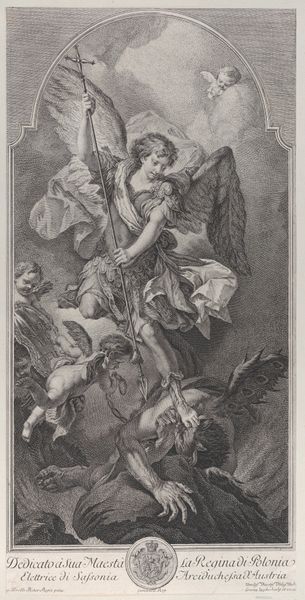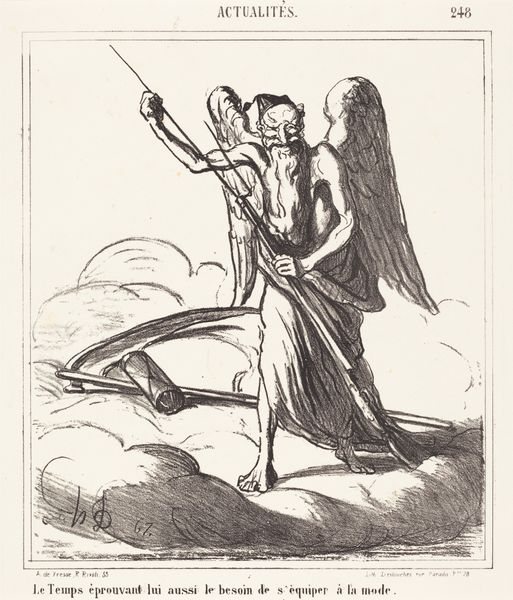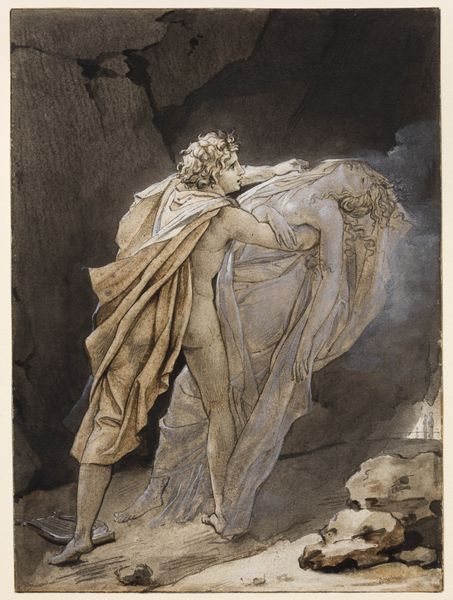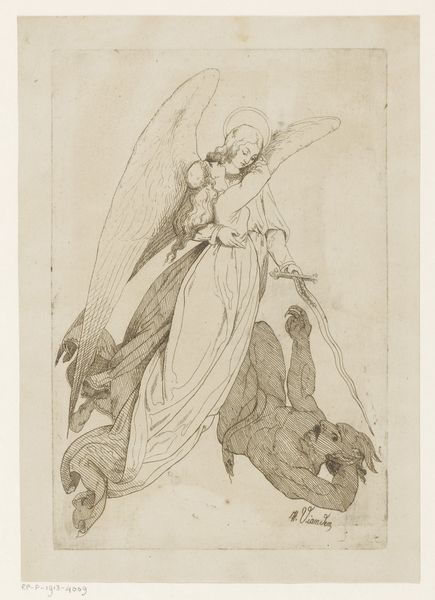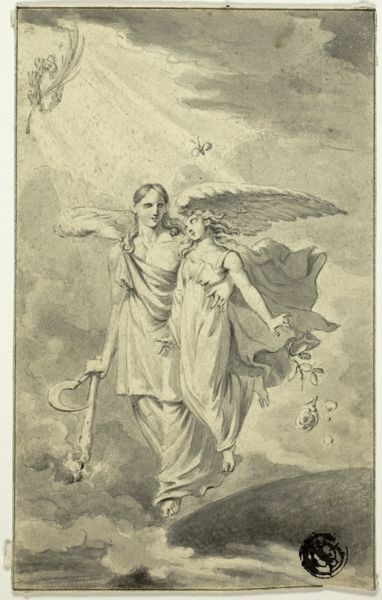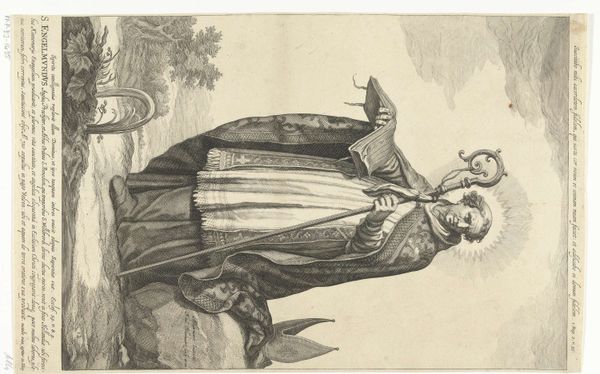
lithograph, print
#
narrative-art
#
lithograph
# print
#
caricature
#
caricature
#
figuration
#
romanticism
#
line
Copyright: National Gallery of Art: CC0 1.0
Editor: Here we have Honoré Daumier’s 1841 lithograph, “Le Charivari reconnaissant a l'année 1841”. It features this strange winged figure kneeling amidst…are those laurel wreaths? It’s a little unsettling, almost a mocking take on a classical subject. What are your thoughts on it? Curator: Ah, Daumier. Always with a barb, wasn’t he? Those wreaths – you’re right, unsettling. Think of them as representing achievements or victories. Now, notice the figure. Does that stance strike you as heroic? Editor: Definitely not. It's almost slumped, and the expression is…exhausted? Curator: Precisely! Daumier wasn't celebrating 1841, he was critiquing it. "Le Charivari" was a satirical magazine, and this image is heavy with social commentary. This is no angelic victory; it is meant to be an image of the period of time expiring after failing to bring liberty to France. The heavy lines, the almost grotesque features... Editor: So the angel isn't angelic at all; it’s a burdened symbol of a disappointing year? The laurel wreaths scattered around imply it didn’t even achieve any worthy accomplishments to commemorate? Curator: Exactly! Daumier uses caricature not just for humour, but to deliver a cutting critique of the political climate of his time. See the weight in those wings, and the weary gaze. It speaks volumes, doesn't it? This Romantic style is far removed from conventional renderings of beauty! Editor: It’s fascinating how he twists classical imagery into something so cynical. I definitely read it differently now, noticing that deeper political meaning and narrative-art approach that he used. Curator: Daumier was a master of subversion, of embedding profound commentary within deceptively simple lithographs. An inspiring and rather rebellious fellow!
Comments
No comments
Be the first to comment and join the conversation on the ultimate creative platform.
